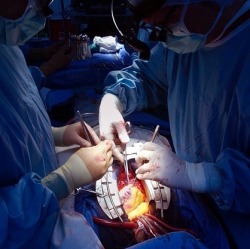
Researchers at Nashville’s Vanderbilt University have developed a wireless capsule that can restore a sense of touch for surgeons. Keyhole surgeries or other minimally invasive procedures could benefit greatly from this new technology, as the capsule provides haptic feedback to help doctors maneuver and make important conclusions during surgery.
urgeons are utilizing less invasive methods of surgery with increasing frequency, although these methods do have some limitations. During open surgery, for instance, doctors traditionally use a technique known as palpation, in which they use their fingers to feel for and locate hidden tumors, blood vessels, and other structures. With minimally invasive surgeries, this technique isn’t feasible, since doctors use smaller points of entry and tiny tools to navigate a patient’s insides.
That’s where the capsule comes in. Containing a pressure sensor, an accelerometer, a wireless transmitter, a magnetic field sensor and a small battery, it’s just 0.6 inches (15.2 mm) wide by 2.4 inches (61 mm) long.
Using surgical tools, doctors can handle the wireless capsule and press it against targeted tissues. The pressure sensor records the information while an accelerometer records the movements. The transmitter then sends haptic information back to a computer analysis system, which gives the surgeon a color-defined layout of the tissue stiffness. This information can help the doctor determine if they are approaching a hidden tumor or some other biological structure.
